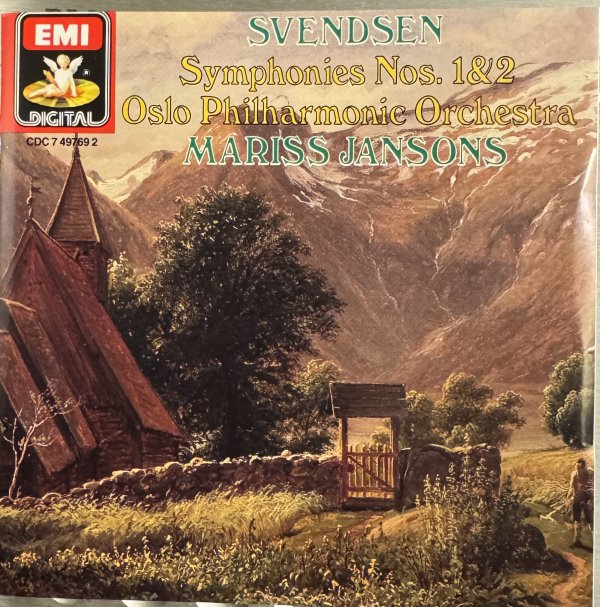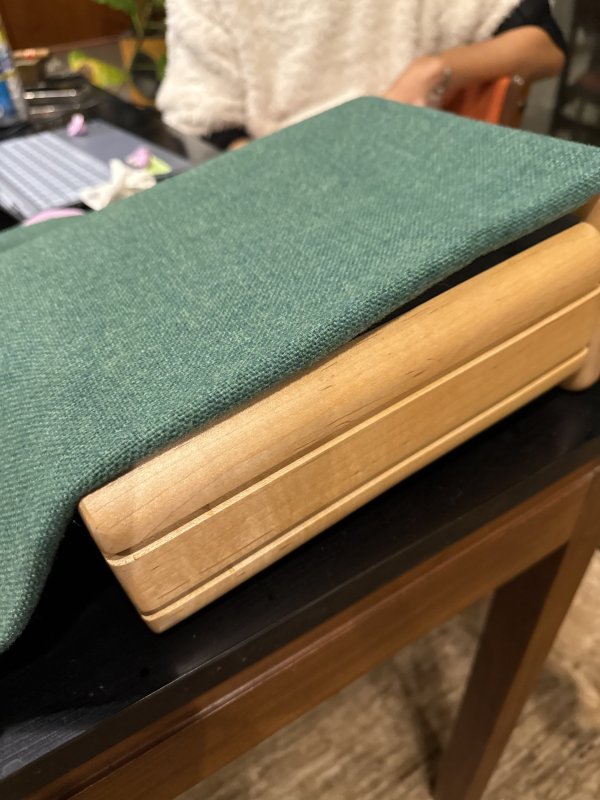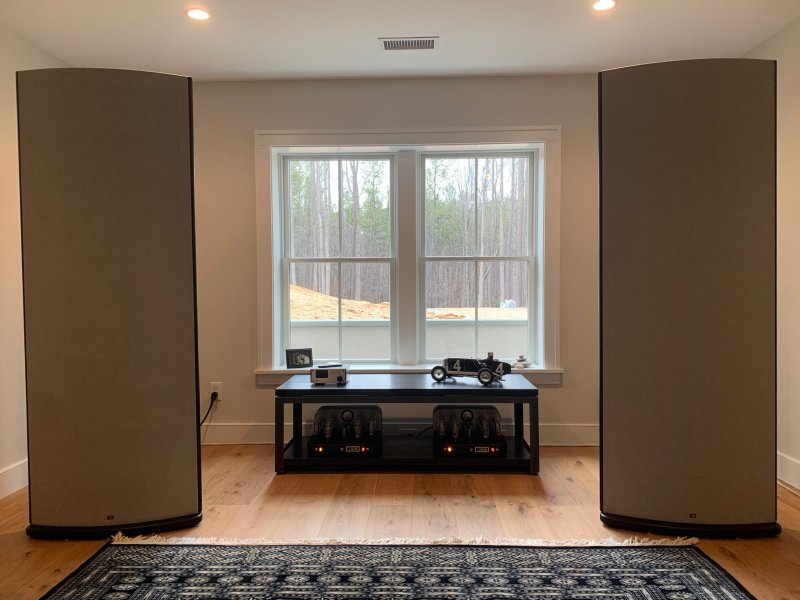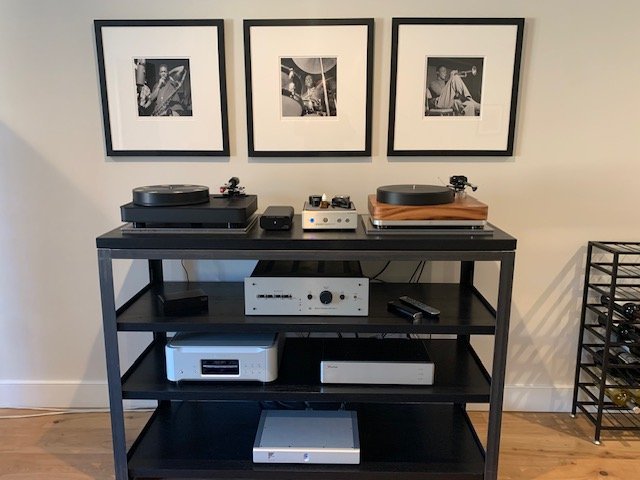We are listening to Mike Jackson tonight on my Quad 2905s played back on the magnificent Chord Blu Mk2/Dave digital stack that blows away any digital streamer I’ve heard. There’s an inherent rightness of sound, a sense of solidity, that’s really hard to reproduce with streaming.
The album I’m listening to now is a CD I picked up several decades ago on a trip to Barcelona, Spain. It’s an extended length version of the famous collaboration between Mike and John Coltrane, their only joint gig. It’s a classic never to be equaled musical tour-de-force. And it sound to my ears far far better than the streaming versions on Qobuz.
The opening track when Coltrane comes in on the left channel guns blazing with his sax is the stuff of jazz legend. This whole album is a conversation between two jazz greats who don’t speak English, but “jazzese”. That’s so much nicer a musical language than guttural English. The recording is excellent for a classic jazz album and these two giants keep the rhythm pounding. It’s like watching a thriller movie except no one gets killed and there are no villains.
So, why does the Chord Blu2/Dave sound so good? First, it’s got one of the best CD transports, the Phillips CD Pro that Audio Research used in all their CD players. Then it’s got Rob Watts brilliant multi-million tap filter that upscales CDs to 705khz. Then it’s got the Dave DAC that’s still among the best DACs money can buy. This digital front end still runs circles around every streamer I’ve heard.
Musically, this jazz album is among the very greatest ever made. When Coltrane comes in late on every track after Milt has said his piece, he steals the show. I feel sorry for Milt How can you compete with Coltrane and his dynamo of a sax? The only jazz album I want in my grave.
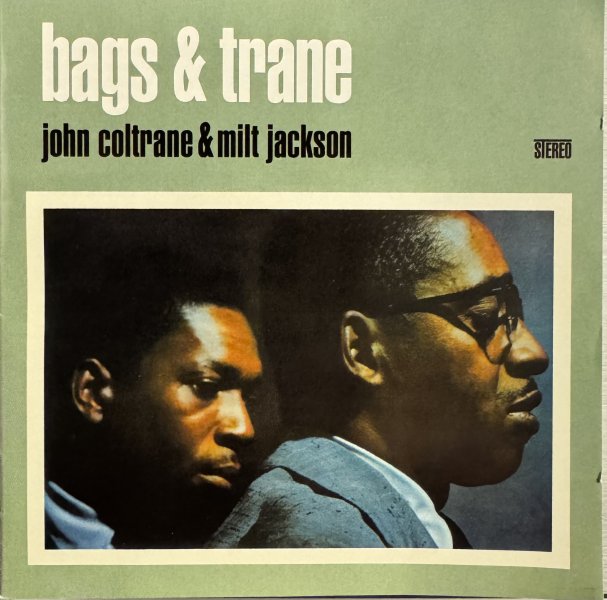
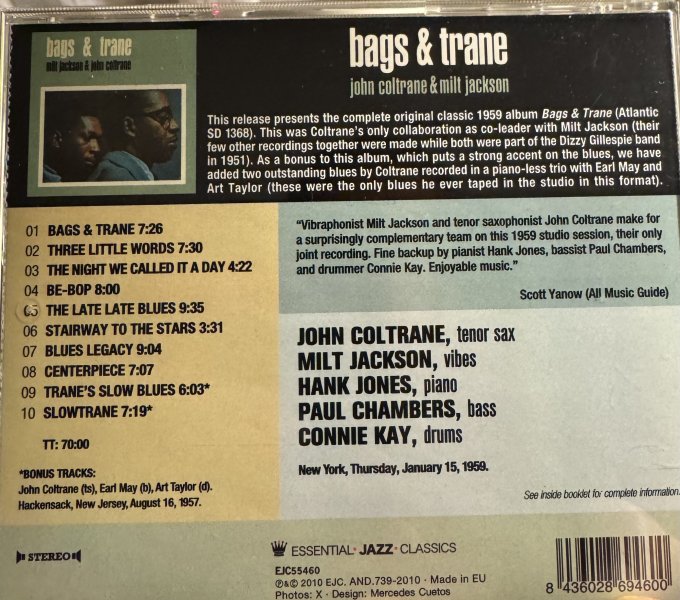
The album I’m listening to now is a CD I picked up several decades ago on a trip to Barcelona, Spain. It’s an extended length version of the famous collaboration between Mike and John Coltrane, their only joint gig. It’s a classic never to be equaled musical tour-de-force. And it sound to my ears far far better than the streaming versions on Qobuz.
The opening track when Coltrane comes in on the left channel guns blazing with his sax is the stuff of jazz legend. This whole album is a conversation between two jazz greats who don’t speak English, but “jazzese”. That’s so much nicer a musical language than guttural English. The recording is excellent for a classic jazz album and these two giants keep the rhythm pounding. It’s like watching a thriller movie except no one gets killed and there are no villains.
So, why does the Chord Blu2/Dave sound so good? First, it’s got one of the best CD transports, the Phillips CD Pro that Audio Research used in all their CD players. Then it’s got Rob Watts brilliant multi-million tap filter that upscales CDs to 705khz. Then it’s got the Dave DAC that’s still among the best DACs money can buy. This digital front end still runs circles around every streamer I’ve heard.
Musically, this jazz album is among the very greatest ever made. When Coltrane comes in late on every track after Milt has said his piece, he steals the show. I feel sorry for Milt How can you compete with Coltrane and his dynamo of a sax? The only jazz album I want in my grave.



















